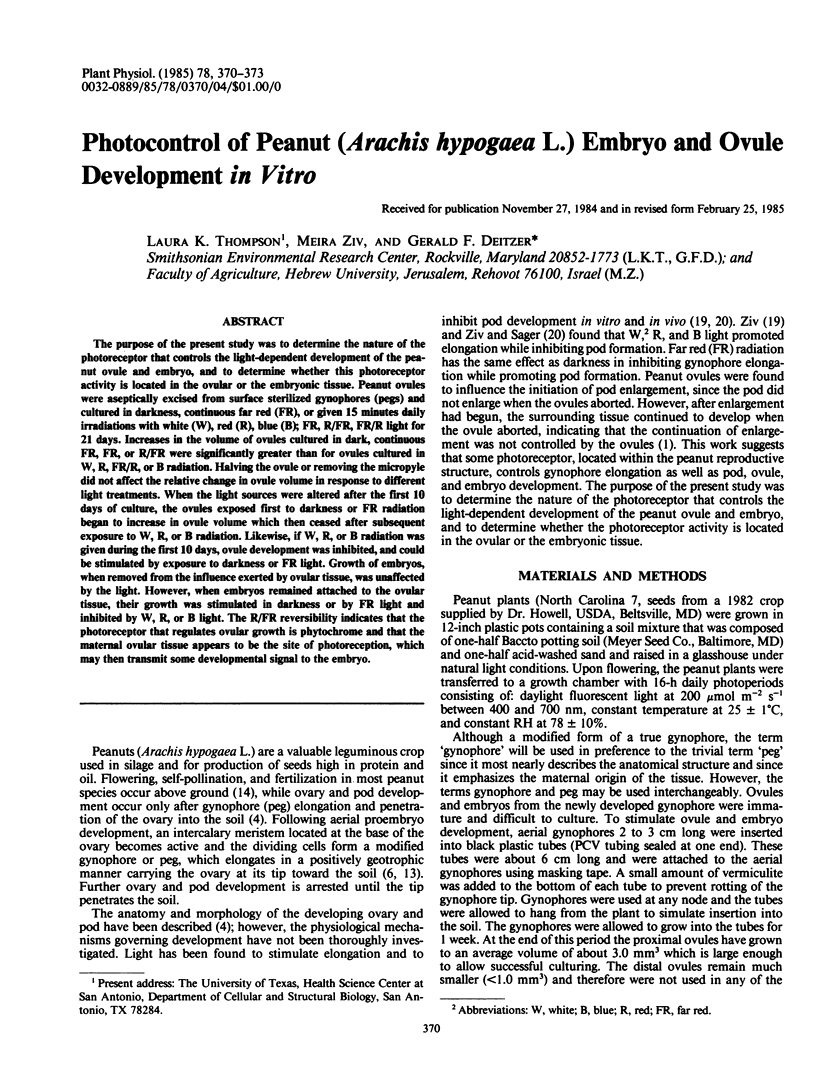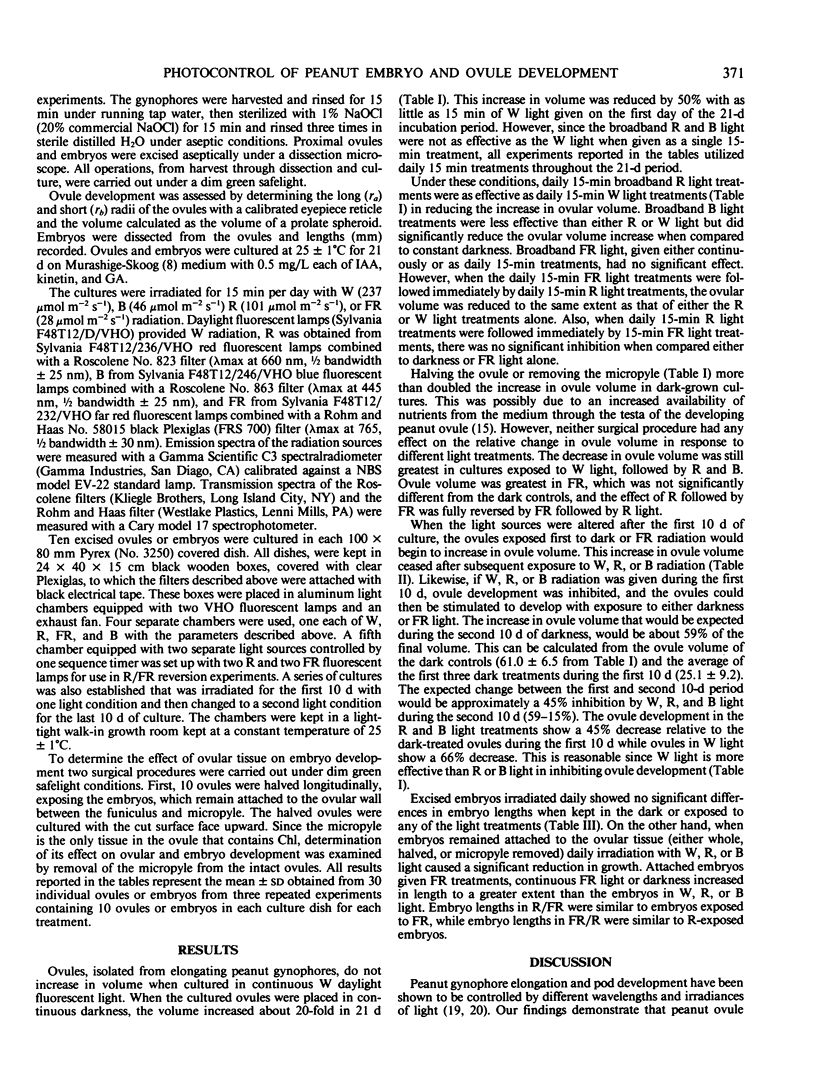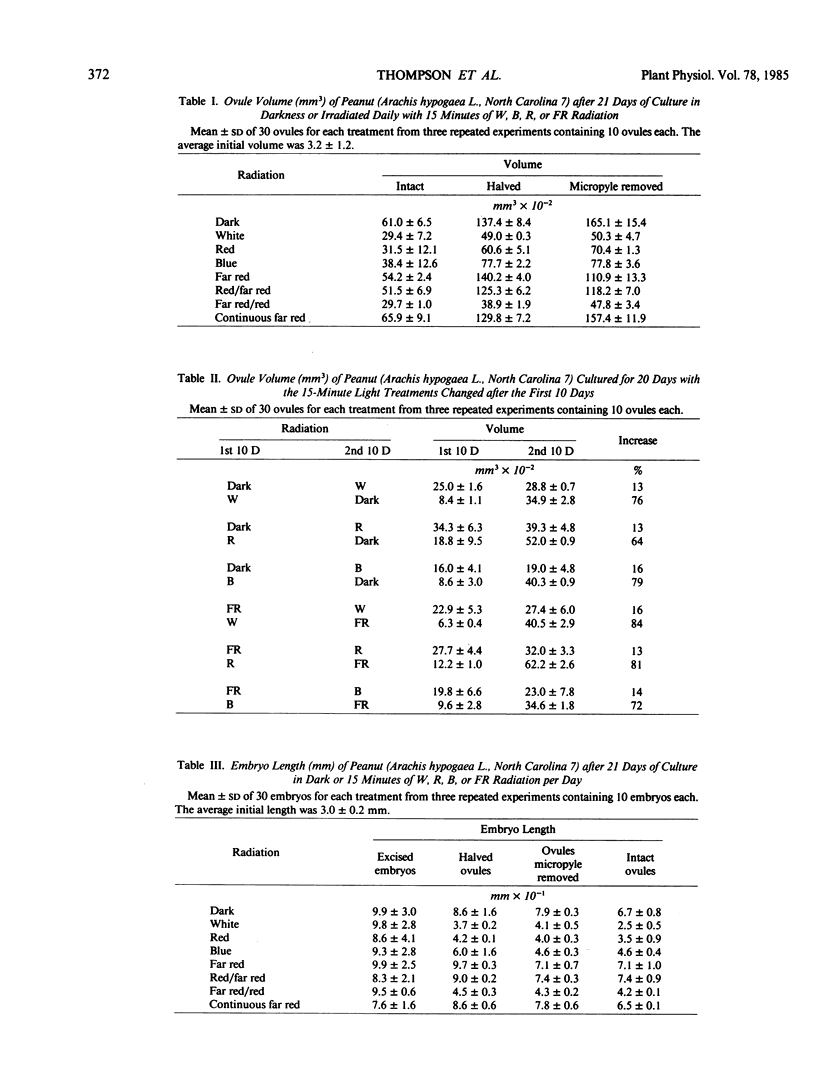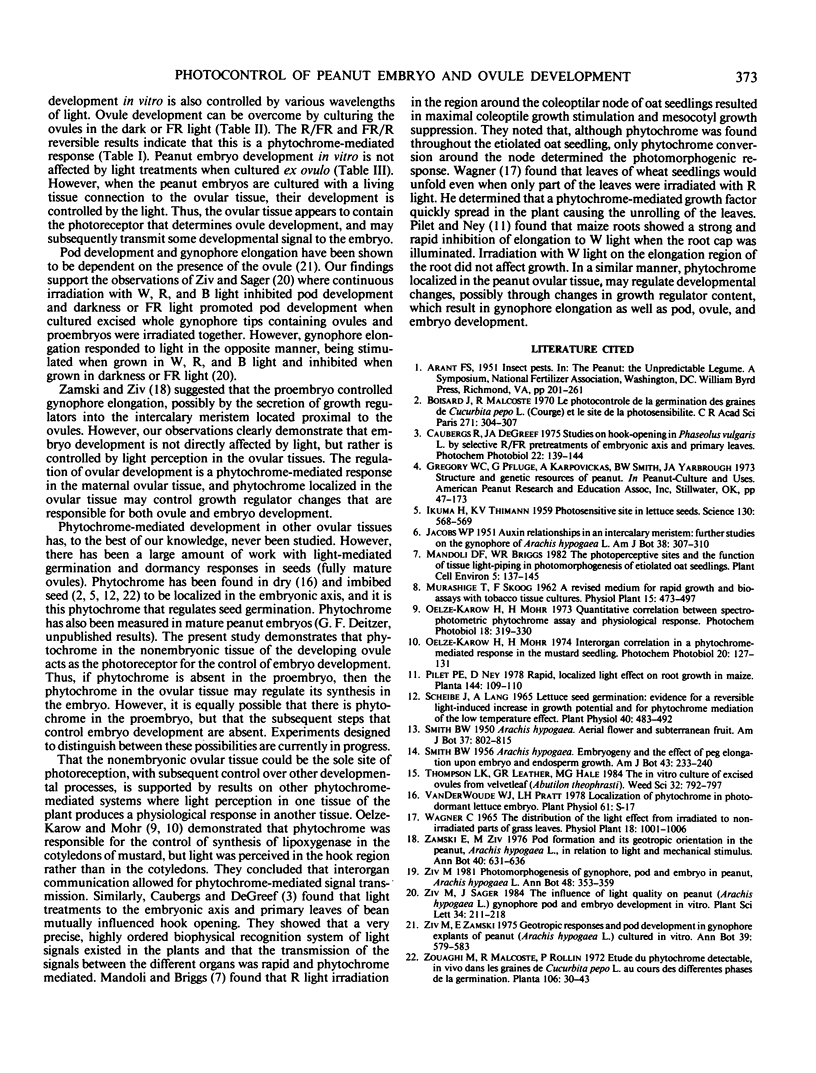Abstract
The purpose of the present study was to determine the nature of the photoreceptor that controls the light-dependent development of the peanut ovule and embryo, and to determine whether this photoreceptor activity is located in the ovular or the embryonic tissue. Peanut ovules were aseptically excised from surface sterilized gynophores (pegs) and cultured in darkness, continuous far red (FR), or given 15 minutes daily irradiations with white (W), red (R), blue (B); FR, R/FR, FR/R light for 21 days. Increases in the volume of ovules cultured in dark, continuous FR, FR, or R/FR were significantly greater than for ovules cultured in W, R, FR/R, or B radiation. Halving the ovule or removing the micropyle did not affect the relative change in ovule volume in response to different light treatments. When the light sources were altered after the first 10 days of culture, the ovules exposed first to darkness or FR radiation began to increase in ovule volume which then ceased after subsequent exposure to W, R, or B radiation. Likewise, if W, R, or B radiation was given during the first 10 days, ovule development was inhibited, and could be stimulated by exposure to darkness or FR light. Growth of embryos, when removed from the influence exerted by ovular tissue, was unaffected by the light. However, when embryos remained attached to the ovular tissue, their growth was stimulated in darkness or by FR light and inhibited by W, R, or B light. The R/FR reversibility indicates that the photoreceptor that regulates ovular growth is phytochrome and that the maternal ovular tissue appears to be the site of photoreception, which may then transmit some developmental signal to the embryo.
Full text
PDF



Selected References
These references are in PubMed. This may not be the complete list of references from this article.
- Caubergs R., De Greef J. A. Studies on hook-opening in Phaseolus vulgaris L. by selective R/FR pretreatments of embryonic axis and primary leaves. Photochem Photobiol. 1975 Sep-Oct;22(3-4):139–144. doi: 10.1111/j.1751-1097.1975.tb08826.x. [DOI] [PubMed] [Google Scholar]
- IKUMA H., THIMANN K. V. Photosensitive site in lettuce seeds. Science. 1959 Sep 4;130(3375):568–569. doi: 10.1126/science.130.3375.568. [DOI] [PubMed] [Google Scholar]
- Scheibe J., Lang A. Lettuce Seed Germination: Evidence for a Reversible Light-Induced Increase in Growth Potential and for Phytochrome Mediation of the Low Temperature Effect. Plant Physiol. 1965 May;40(3):485–492. doi: 10.1104/pp.40.3.485. [DOI] [PMC free article] [PubMed] [Google Scholar]


